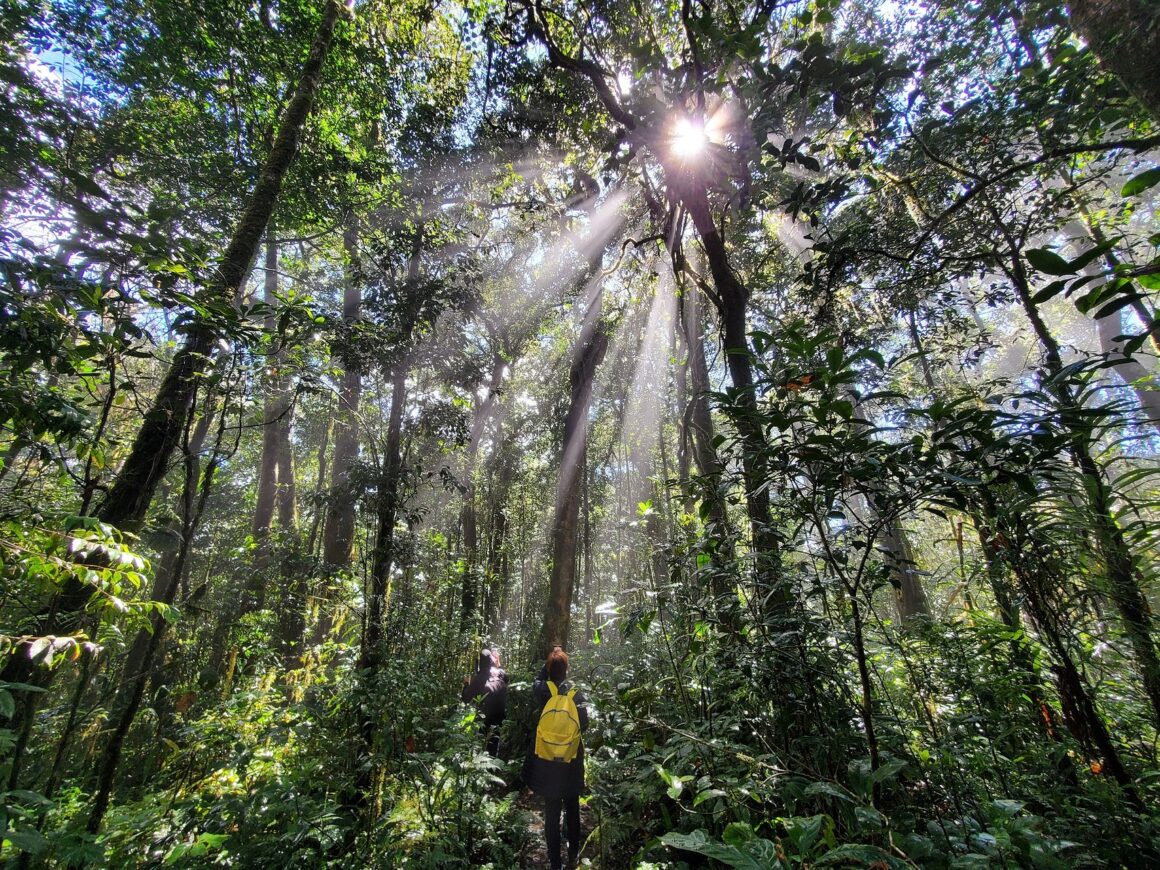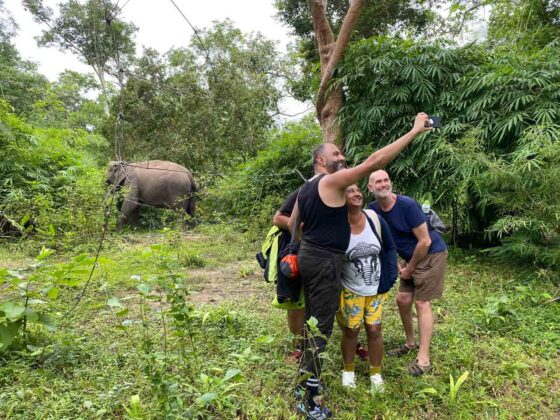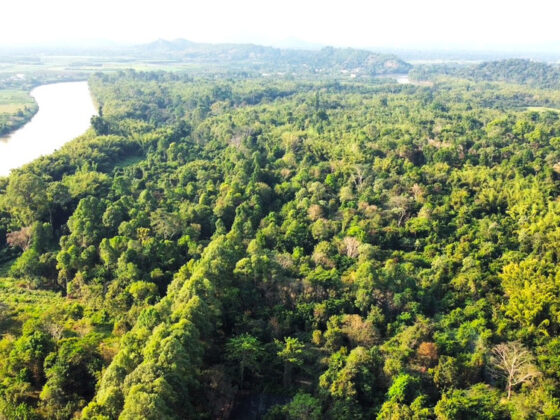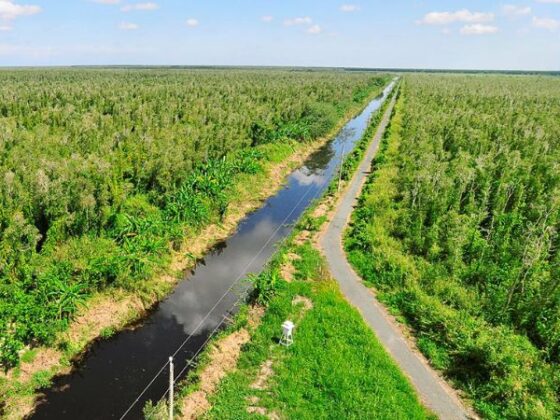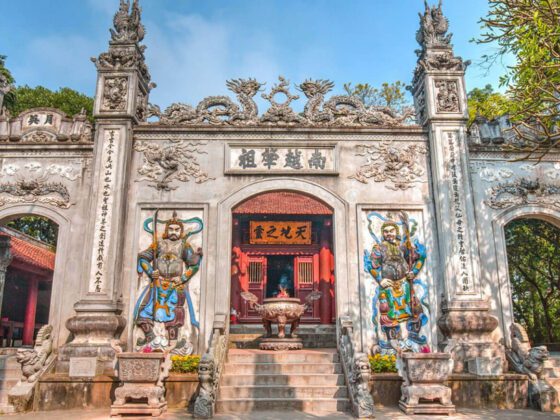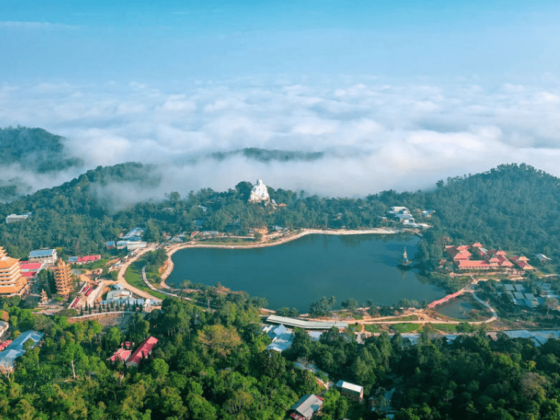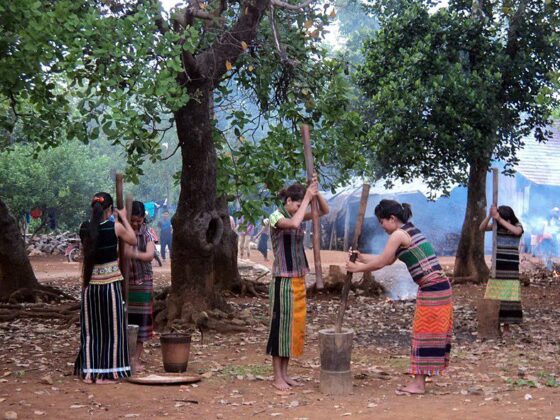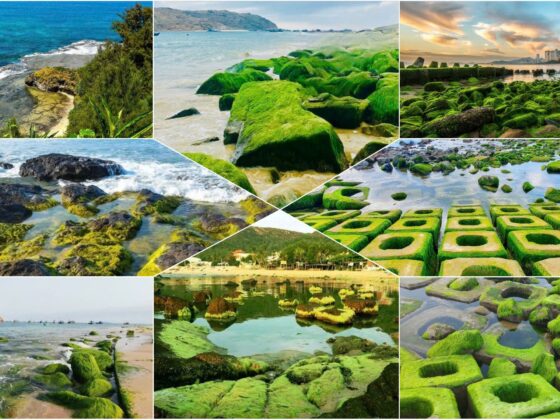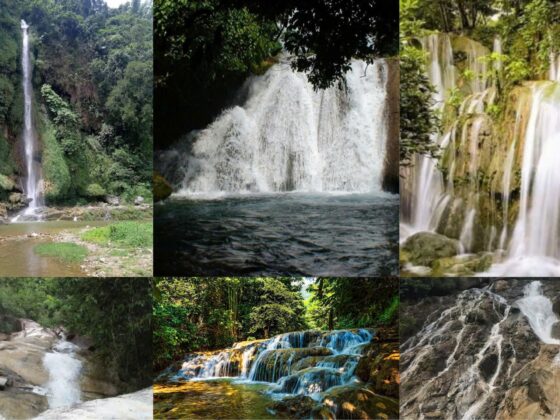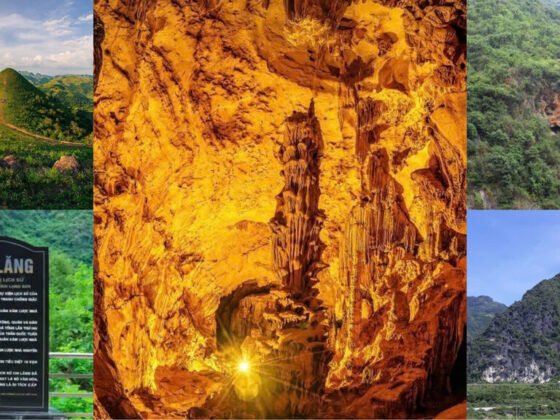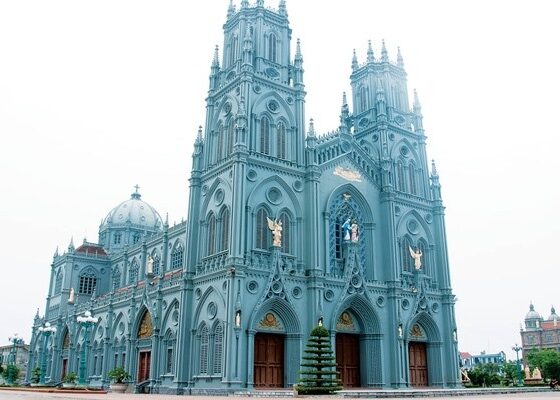Table of Contents Show
Some mountains test your legs. Others test your will. The Bidoup Núi Bà trekking experience, in the heart of Lâm Đồng Province, tests both. Rising over 2,200 meters, this peak is often called one of Vietnam’s toughest climbs. Yet for those who attempt it, the reward lies not just in reaching the summit, but in the journey through forests that whisper of time, tradition, and humility.
Read more interesting posts here:
- A Hiker’s Guide: The 5 Best Trekking in Vietnam You Should Try
- Safe Trekking in Vietnam: Your Ultimate Guide to Unforgettable Adventures
- Vietnam Hiking Regulations: Essential Knowledge for Adventurers
The challenge of the Bidoup Núi Bà Trekking
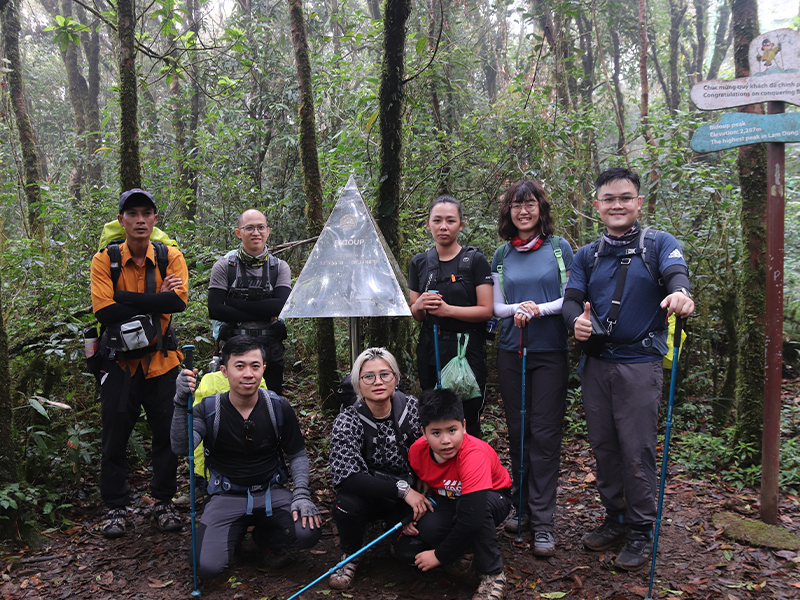
The trail begins deceptively gentle. From the edge of Bidoup Núi Bà National Park, your Bidoup Núi Bà trekking adventure takes you through cool pine forests, the air sharp and clean compared to the humidity of the lowlands. The sound of wind rushing through the trees creates a music of its own, a soft whistle that follows you with every step. But soon, the terrain tilts upward. Roots twist across the ground like coiled ropes, slopes steepen, and the climb becomes relentless. Each step demands strength, each breath feels thinner in the high altitude.
The climb is not a quick one. A full Bidoup Núi Bà trekking route usually stretches into two days, with a night spent at a simple campsite halfway up. By the time you roll out your sleeping bag, your body aches, and your clothes are damp with sweat. But in the evening stillness, the forest feels alive. The stars pierce the darkness above, and the sound of crickets blends with the low hum of the wind. It’s both exhausting and peaceful — the kind of tired that empties you out and fills you at the same time.
Discovering the unique ecosystem of bidoup Núi Bà
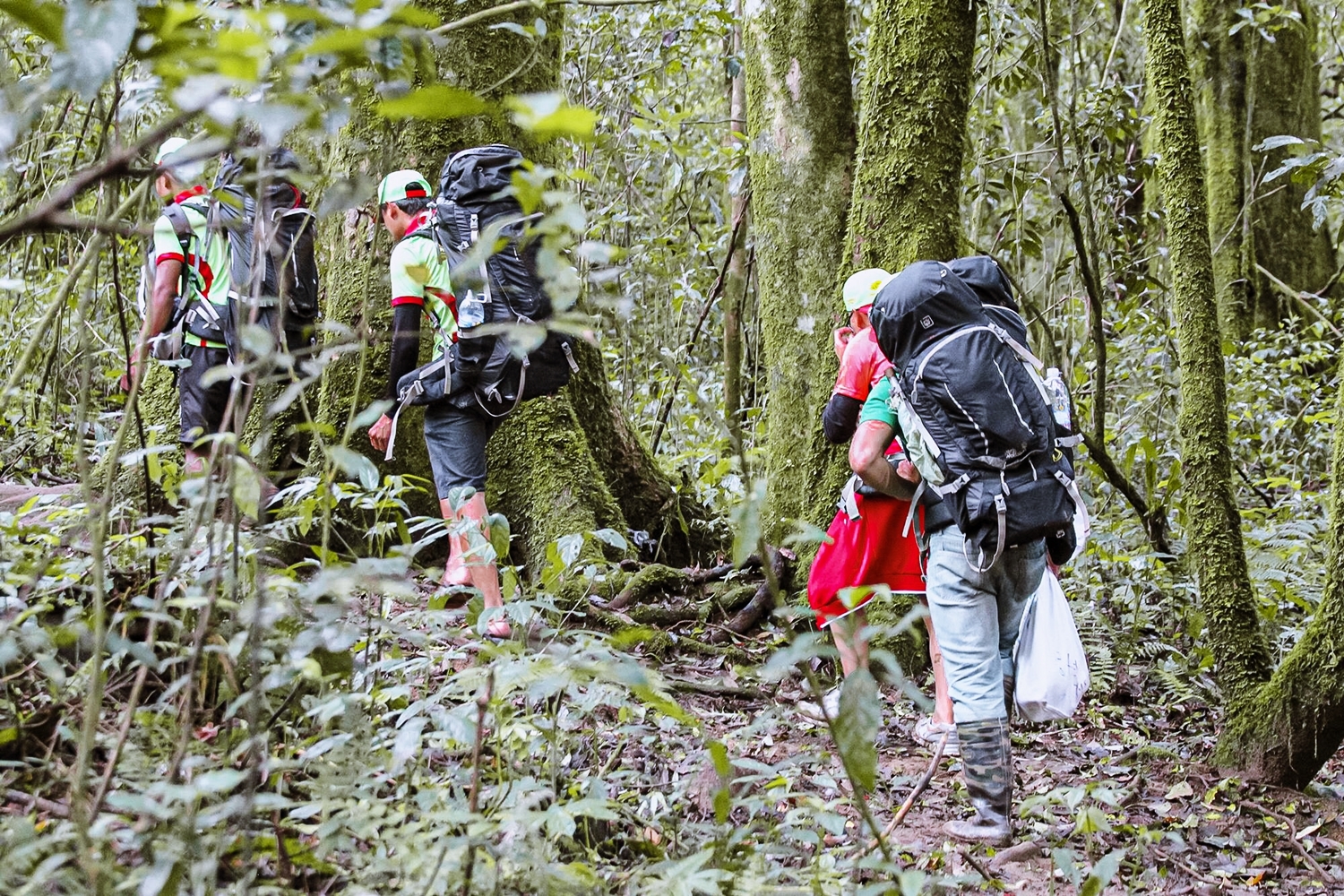
On the second day of Bidoup Núi Bà trekking, the forest begins to change. Pine gives way to dense, mossy evergreen, the air cooler, the ground damp. It’s here that guides sometimes point out the scars on old pine trunks, resin taps once used by villagers to harvest sap for fire and medicine. These are not just trees but living records of livelihoods, where humans and forests shared a careful balance. Stories from K’Ho elders speak of the mountain as sacred, home to spirits that guard both land and people. To tread here is to walk among history and myth.
Why you must hire a guide for the Bidoup Núi Bà Trekking
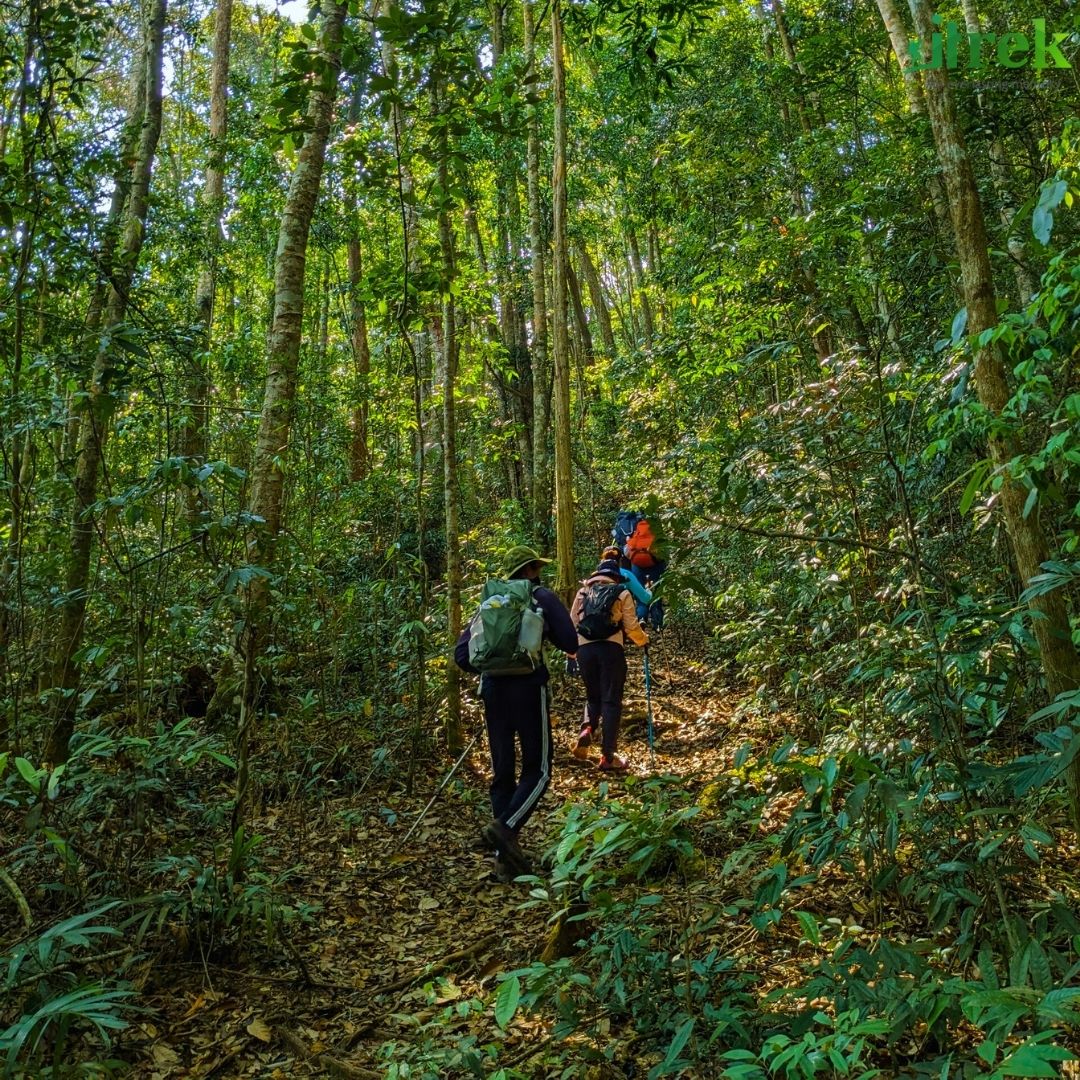
Never attempt Bidoup Núi Bà trekking alone! The terrain is steep, confusing, and at times unforgiving. A local guide is essential, not only for safety, but for the way they bring the mountain to life. With their trained eyes, they’ll point out orchids clinging to mossy branches, medicinal plants hidden under leaves, or butterflies so vivid they look painted by hand. If you’re lucky, you may spot the black-shanked douc langur, a rare primate with fiery fur, or hear the rattling call of a great barbet high in the canopy. Even the smallest things — a luminous beetle glowing faintly in the dark, or a stick insect disguised perfectly against bark, become treasures when seen through a guide’s knowledge.
The summit: The reward of the Bidoup Núi Bà Trekking
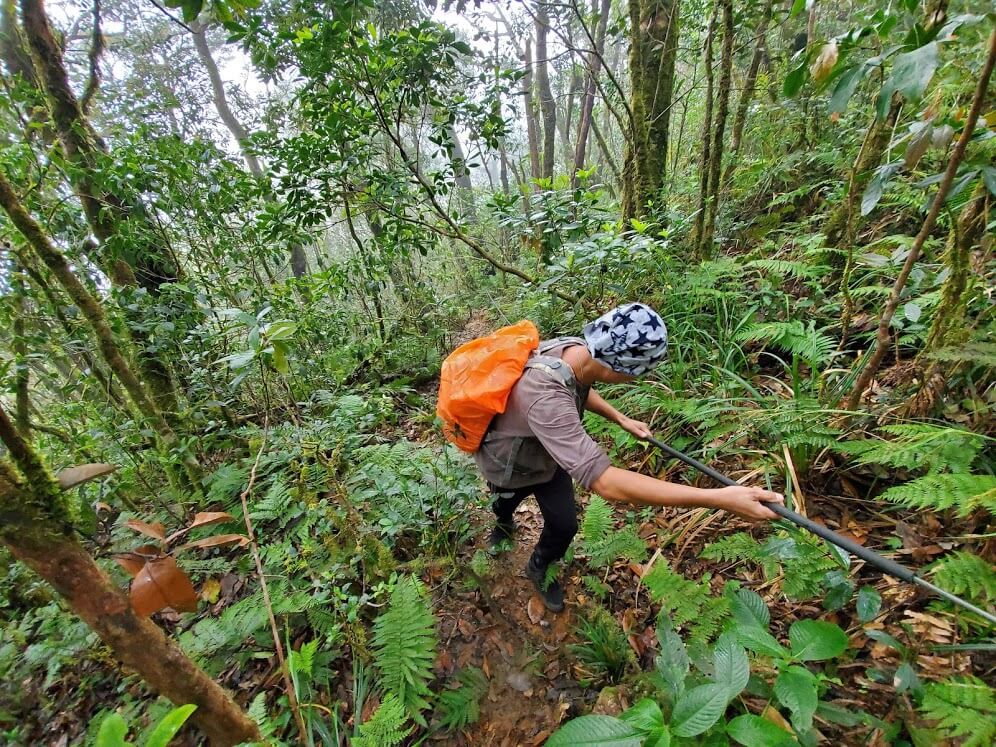
The final push to the summit is brutal on any Bidoup Núi Bà trekking adventure. Legs shake, lungs burn, and every part of you wonders why you chose this path. Then suddenly, the trees part, and the view opens. From the roof of Lâm Đồng, the highlands stretch endlessly, ridges rolling like waves, valleys softened by mist, and skies so wide they seem to swallow you whole. The exhaustion doesn’t disappear, but it transforms. What was once weight becomes lightness. What was once a struggle becomes gratitude.
Standing there, the wind fierce against your skin on a Bidoup Núi Bà trekking expedition, it’s hard not to feel humbled. The mountain doesn’t brag about its beauty or boast of its height. It simply is. Crossing it teaches you the same lesson: strength is not about conquering, but about listening, to your body, to the wind, to the quiet truths of the land.
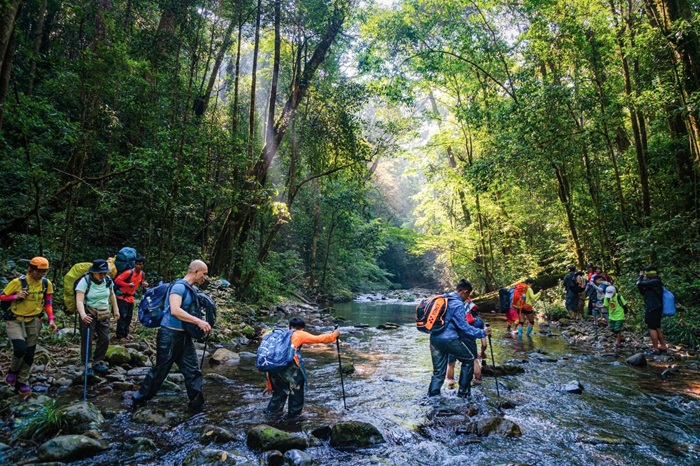
Bidoup Núi Bà trekking is not a climb for everyone. It requires endurance, preparation, and guidance. But for those willing to take on the challenge, it offers something rare: a chance to feel both small and vast at the same time. The mountain strips away pride and replaces it with humility, reminding you that in the end, we don’t conquer mountains, they welcome us, briefly, and then send us back down with softer hearts.
The whispers of the wind stay long after the climb is over. They echo in memory, a reminder that the hardest journeys are often the ones that leave us the most grateful. On Bidoup Núi Bà trekking, every drop of sweat, every aching step, becomes part of a story larger than ourselves, a story of resilience, reverence, and the quiet joy of reaching higher than you thought you could.
Conclusion
In the end, the Bidoup Núi Bà trekking experience is not a climb for everyone. It requires endurance, preparation, and expert guidance. But for those willing to take on the challenge, it offers something rare: a chance to feel both small and vast at the same time. The mountain strips away pride and replaces it with humility, reminding you that in the end, we don’t conquer mountains, they welcome us, briefly, and then send us back down with softer hearts.
Ready to discover your own trail tale? Join our community of explorers in the ExoTrails Facebook Group and follow the ExoTrails Fanpage for daily inspiration and trail tips!
FAQs
How challenging is the Bidoup Núi Bà trek?
Bidoup Núi Bà is considered one of Vietnam’s toughest climbs, rising over 2,200 meters. It typically requires a strenuous 2-day trek with steep inclines, root-laden trails, and high altitude, demanding significant physical endurance.
Is a local guide necessary for climbing Bidoup Núi Bà?
Yes, a local guide is absolutely essential for the Bidoup Núi Bà trek. The terrain is steep and confusing. Guides ensure safety, navigate the complex trails, and enrich the experience with local knowledge.
What unique wildlife can be found in Bidoup Núi Bà National Park?
Bidoup Núi Bà National Park is home to diverse wildlife. Trekkers might spot rare primates like the black-shanked douc langur, hear the calls of the great barbet, and observe various birds and insects.
What is the best time of year to trek Bidoup Núi Bà?
Generally, the dry season (roughly November to April) is ideal for trekking Bidoup Núi Bà, as the trails are less slippery and weather conditions are more favorable.
What is the cultural significance of Bidoup Núi Bà to local communities?
To the local K’Ho communities, Bidoup Núi Bà is a sacred mountain, believed to be home to protective spirits. The forest has also historically provided livelihoods through practices like resin tapping.
What should I pack for a 2-day trek on Bidoup Núi Bà?
Essential packing includes sturdy trekking shoes, layered clothing, a waterproof jacket, a sleeping bag, sufficient water, high-energy snacks, a first-aid kit, and a headlamp.
How can I arrange a trek to Bidoup Núi Bà National Park?
It’s best to contact reputable tour operators specializing in adventure travel in Vietnam or directly reach out to the management of Bidoup Núi Bà National Park to arrange local guides and necessary permits.

